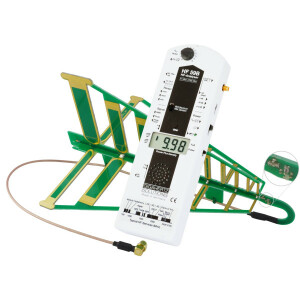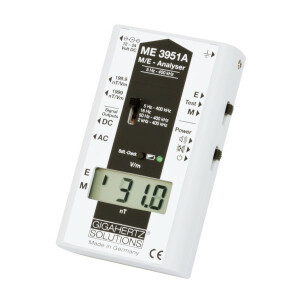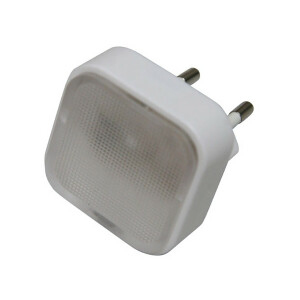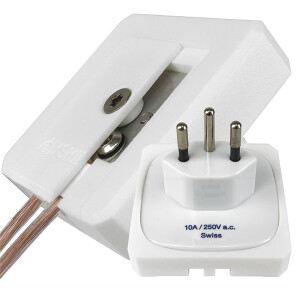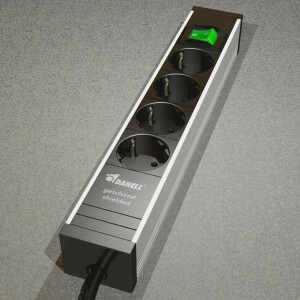Electrosensitivity is understood as the (involuntary) ability to mentally or physically perceive stresses on the body caused by electric, magnetic and electromagnetic fields (EMF). People suffering from electrosensitivity or electrohypersensitivity (EHS) are often not only able to perceive electromagnetic radiation, but even show symptoms such as headaches, sleep disorders, tinnitus or dizziness. According to the German Federal Office for Radiation Protection (BfS), just under 2 percent of the population describe themselves as electrosensitive.
What is electrosensitivity?
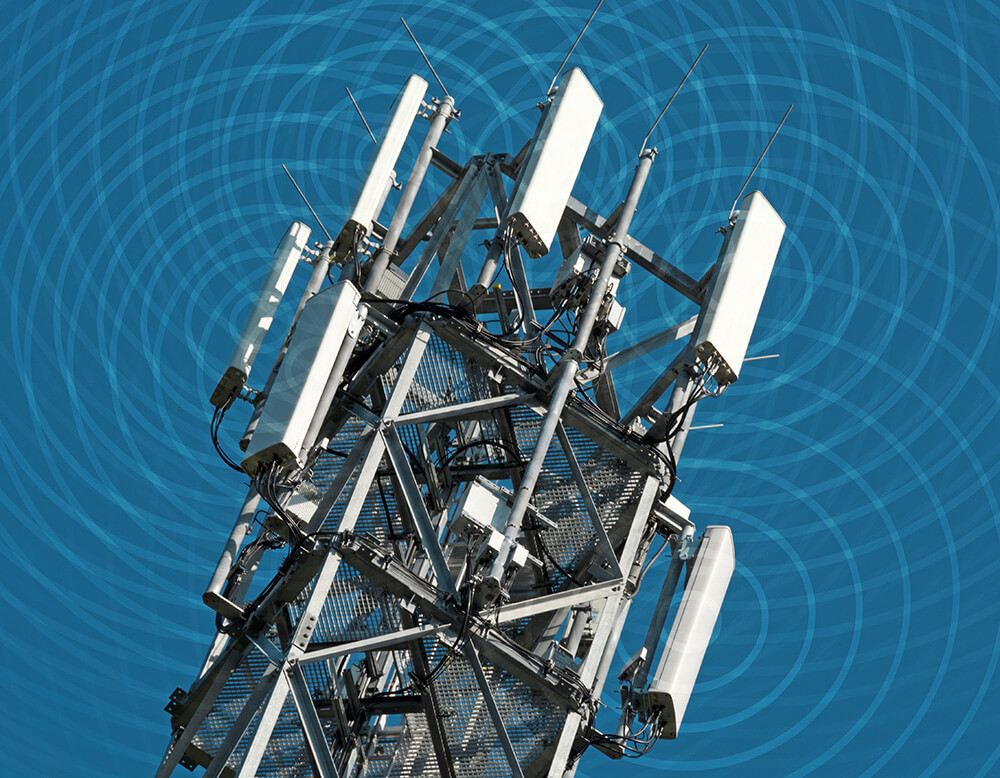
Electrosensitivity (abbreviated to "ES") refers to the ability of people to perceive electric, magnetic or electromagnetic fields. Due to the growing number of electromagnetic, high-frequency fields in our environment (mobile phones, WLAN, DECT phones, microwaves, etc.), the topic of electrosensitivity is also becoming increasingly important. All over the world, the number of people who are convinced that they perceive electrosmog and suffer physically and mentally from it (also called electrohypersensitivity "EHS") is increasing at the same time. With the expansion of 5G networks and the associated increase in base stations in cities and towns, the number of impaired individuals is very likely to increase further.
What are the symptoms of electrosensitivity?
The symptoms of electrosensitivity vary greatly. The complaints caused by electrosmog range from headaches, sleep disturbances, fatigue and lack of concentration to heart complaints, dizziness and seizures. In addition, affected persons name further symptoms such as tinnitus, allergies, skin rashes as well as an increased susceptibility to infections. The symptoms mentioned occur in some people at radiation levels far below the legal limits. Other electrosensitive persons experience the symptoms only at higher radiation doses./p>
The consequences for electrosensitive persons can be serious. Some suffer so much from the consequences of electrical or electromagnetic radiation exposure that they even have to give up their job or change their place of residence. For others, their partnership suffers or they develop secondary illnesses such as depression, anxiety or frustration.
Doctors, on the other hand, are often perplexed by electrosensitivity, as it is not easy to clearly identify it as the cause of the symptoms mentioned. In addition, EHS is not recognized as an official clinical picture in Germany and physicians therefore do not have sufficient diagnostic, billing and treatment options available.
What are the causes of electrosensitivity?
Modern people are increasingly exposed to low-frequency and high-frequency fields at home, at work and during leisure time. The power grid and the devices connected to it generate, among other things, low-frequency fields in the mains frequency of 50 hertz as well as harmonics with a multiple of the 50 hertz mains frequency.
WLAN routers, DECT cordless phones, smartphones and microwave ovens, on the other hand, generate high-frequency electromagnetic fields with a frequency of 100 kilohertz to 300 gigahertz.
Due to the constant increase of electric and electromagnetic fields in our environment, the number of people suffering from electrohypersensitivity is also increasing. Today, however, numerous studies prove that the complaints of those affected have nothing to do with imagination, but are based on a real, scientifically provable and measurable basis.

What biological effect does electrosmog have on the body?
Every cell in our body constantly sends and receives electrical impulses and measurable currents constantly run through the human nerve pathways. So it is only understandable that artificial and technically generated fields in the high-frequency and low-frequency range can interfere with natural cell communication. In particular, high-frequency electromagnetic fields of mobile radio operate in the same frequency range as the body's own natural oscillations that control life processes. As a result, unnatural electrical oscillations are imposed on the human cells from the outside, which can lead to stress and faulty reactions of the cells. This in turn has consequences for the entire human organism, hormone balance, sleep rhythm, cancer defense and many other areas of the body.
Is there an (online) test for electrosensitivity?
If you would like to know whether you share symptoms like people who suffer from electrosensitivity or electrohypersensitivity, we provide you with some test questions for this purpose. If you answer "yes" to some or all of the questions in our test, you may have electrohypersensitivity (the test is for guidance only and does not constitute medical advice).
- Do you often sleep poorly or have trouble falling asleep? ☐ Yes ☐ No
- Do you often wake up in the morning feeling tired, exhausted, and run down? ☐ Yes ☐ No
- Do you often feel tired, irritable, and out of sorts during the day? ☐ Yes ☐ No
- Do you suffer from recurring headaches, dizziness, or ringing in the ears? ☐ Yes ☐ No
- Do you feel worse than usual when you are near WLAN routers, for example? ☐Yes ☐ No
- Do you have any pre-existing conditions that affect your health? ☐ Yes ☐ No
- Are there multiple cell phone or radio transmission towers in your neighborhood? ☐ Yes ☐ No
What measures can be used to eliminate electrosensitivity?
Many people who suffer from electrosensitivity are already burdened by pre-existing conditions. On the one hand, it therefore makes sense to take measures to promote general health. Because this is not always possible, various radiation protection measures can also be taken.
The first step is always a measurement with a high-frequency and low-frequency measuring device. This is the only way to determine to what extent radiation exposure is present.
Affected persons who show symptoms of electrosensitivity can also take structural measures to ensure that electromagnetic radiation does not enter living areas. This can be done, for example, by using shielding materials, shielding paints or shielding fabrics.
Demand switches can also be used to reduce exposure to the power grid by switching off the voltage (if, for example, no consumers are active in the bedroom at night). For those affected, however, it is also important to avoid using wireless devices such as smartphones, tablets or notebooks.
Conclusion: Electrosensitivity - a complaint that deserves more attention!
The symptoms of electrosensitivity and electrohypersensitivity are complex and unspecific. The type of previous exposure, the previous illness, the age, the duration and intensity of the radiation exposure all play a significant role in the progression. Those who wish to protect themselves can - in addition to improving their own health - take measures to shield themselves from low-frequency and high-frequency radiation in particular.
Do you have any questions or would you like more information on the subject of "shielding against electrosmog"? Our staff will be happy to help you at any time.

Do you need help?
We will be glad to help you.
We will be happy to assist you in selecting the appropriate measuring device and also advise you on possible protection solutions.
Just contact us!
Mo-Thu 08:00 am – 5:00 pm / Fr 08:00 am – 1:00 pm
Phone: 0049 9101 / 90 93 - 0
Email: info@gigahertz-solutions.de


